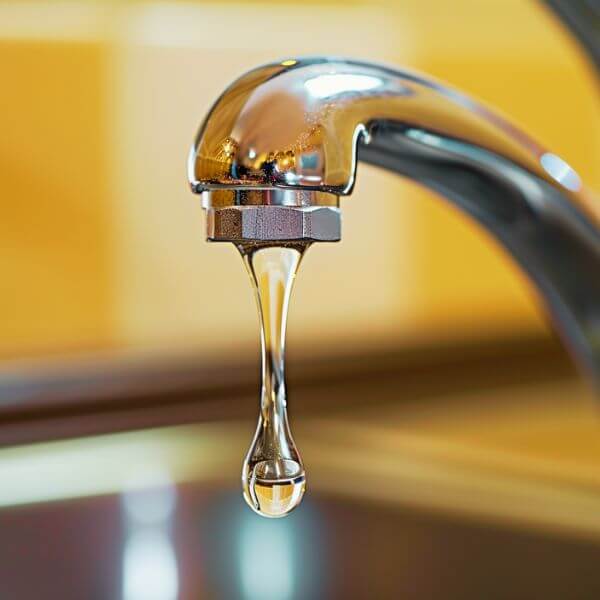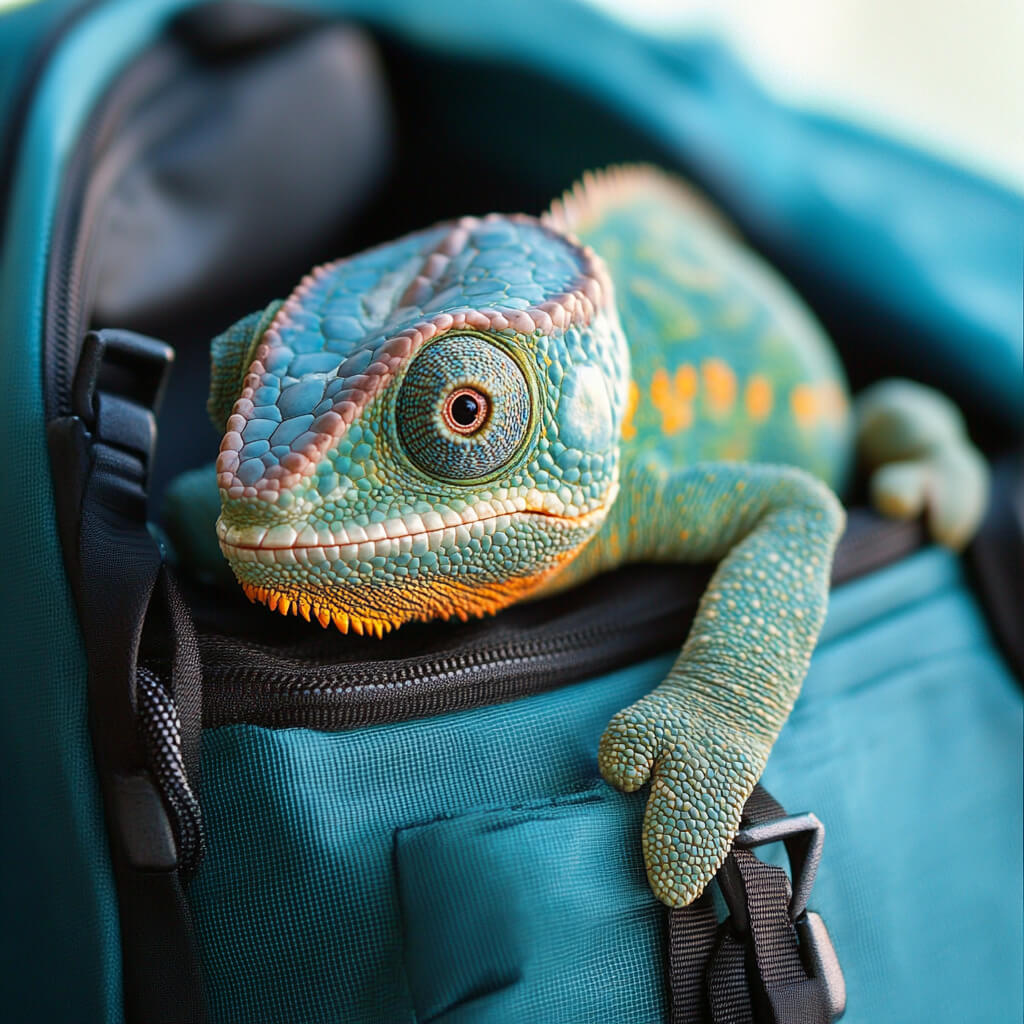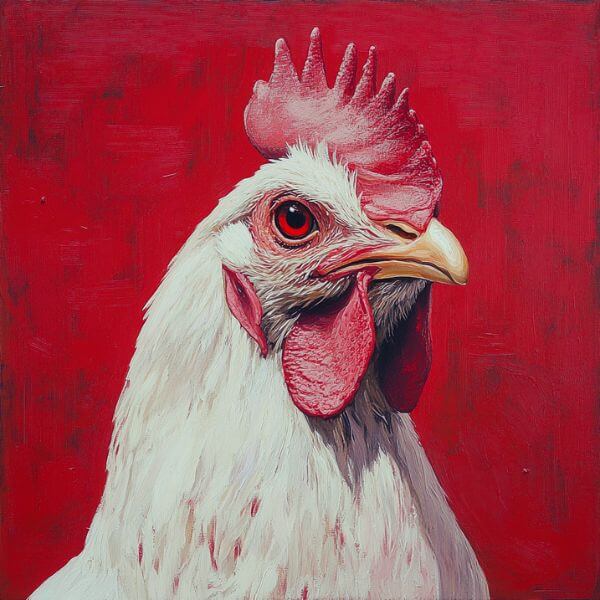This is a tricky one.. yes, chameleons can drink tap water but it depends.
While tap water isn’t immediately harmful to chameleons, it’s not the ideal choice.
The safety of tap water for your chameleon buddy depends on several factors:
- Your local water quality
- Treatment methods used by your water supplier
- The presence of additives like chlorine or fluoride
Understanding chameleon hydration needs
Before we go deep into the tap water question, let’s chat about why water is so crucial for these color-changing critters.
Chameleons need water not just for drinking, but also for maintaining their skin health and regulating body temperature.
Here’s a quick rundown of a chameleon’s hydration needs:
| Hydration Factor | Importance |
| Drinking water | Essential for survival |
| Skin moisture | Helps with shedding and overall health |
| Humidity | Aids in respiratory function |
Chameleons typically get their water from droplets on leaves and other surfaces, rather than from standing water.
This means they might not recognize a water dish as a source of hydration. Keep an eye out for these signs of dehydration:
- Sunken eyes
- Wrinkled skin
- Lack of urates (white part of their poop)
- Decreased activity
Risks of tap water for chameleons
Let’s break down why tap water might not be the best choice for your color-changing pal:
Chlorine concerns
Chlorine in tap water can irritate a chameleon’s sensitive mucous membranes and potentially cause respiratory issues.
While it keeps our water safe from bacteria, it’s not so great for our reptilian friends.
Heavy metal headaches
Depending on your area, tap water might contain trace amounts of heavy metals.
These can accumulate in your chameleon’s system over time, potentially leading to health problems.
pH problems
Chameleons prefer slightly acidic to neutral water.
Most tap water tends to be more alkaline, which isn’t ideal for these picky drinkers.
Here’s a handy table to visualize the ideal water parameters for chameleons:
| Parameter | Ideal Range | Typical Tap Water |
| pH | 6.5 – 7.0 | 6.5 – 8.5 |
| Chlorine | 0 ppm | 0.2 – 4 ppm |
| Hardness | Soft to medium | Varies widely |
Safe water sources for chameleons
So, if tap water isn’t great, what can we give our scaly friends? Here are some better options:
- Filtered water: Using a good quality water filter can remove many of the problematic elements from tap water.
- Bottled spring water: This is usually a safe bet, but check the mineral content to ensure it’s not too high.
- Rainwater: If you live in an area with clean air, collected rainwater can be an excellent natural option.
- Reverse osmosis water: This ultra-purified water is great, but you might need to add some minerals back in for balance.
Treating tap water for chameleon consumption
If you’re in a pinch and need to use tap water, here’s how you can make it safer:
- Dechlorinate the water: Let it sit out for 24 hours to allow the chlorine to evaporate.
- Use a water conditioner: These products, available at pet stores, can neutralize chlorine and heavy metals.
- Boil and cool: Boiling water can remove chlorine, but be sure to let it cool completely before offering it to your chameleon.
Providing water in chameleon enclosures
Now that we’ve sorted out what water to use, let’s talk about how to serve it up:
- Misting systems: These mimic natural rainfall and are a great way to provide water droplets for your chameleon to drink.
- Drip systems: A slow, steady drip can create appealing water droplets on leaves and branches.
- Spray bottle: A manual option, but effective for creating droplets your chameleon can lap up.
Remember, chameleons rarely drink from standing water, so a traditional water dish isn’t usually necessary.
Chameleon drinking behavior
Watching a chameleon drink is like seeing a tiny, living water pump in action.
They use their long, sticky tongues to lap up water droplets from leaves or other surfaces. It’s pretty cool to watch!
To encourage natural drinking behaviors:
- Mist the enclosure regularly
- Provide lots of leafy plants for water droplets to collect on
- Use a dripper to create a constant source of fresh droplets
Maintaining proper hydration for chameleons
Keeping your chameleon well-hydrated isn’t just about providing clean water.
It’s also about creating the right environment. Here are some tips:
- Maintain proper humidity levels: Most chameleon species prefer humidity between 50-80%.
- Mist the enclosure 2-3 times daily
- Provide a variety of plants and branches for water droplets to collect on
- Monitor your chameleon’s behavior and appearance for signs of dehydration
FAQs
How often should I mist my chameleon’s enclosure?
Most chameleons benefit from misting 2-3 times daily, but this can vary based on species and your home’s humidity levels.
Can chameleons get water from their food?
Yes, chameleons can get some moisture from their food, especially from juicy insects. However, this isn’t enough to meet all their hydration needs.
What are the signs of dehydration in chameleons?
Look out for sunken eyes, wrinkled skin, lack of urates in their poop, and decreased activity.
Is distilled water safe for chameleons?
While distilled water is free from contaminants, it lacks minerals that chameleons need. If you use distilled water, consider adding a reptile mineral supplement.
How long can chameleons go without water?
Chameleons shouldn’t go more than a day without water. In the wild, they get moisture daily from dew and rainfall.
Wrapping it up
So, can chameleons drink tap water? While it’s not ideal, treated tap water can be okay in a pinch.
Your best bet is to provide filtered, dechlorinated, or naturally sourced water to keep your color-changing companion in tip-top shape.
Remember, hydration is about more than just drinking water.
It’s about creating an environment that mimics your chameleon’s natural habitat.
With the right setup and water source, you’ll have a happy, healthy chameleon showing off all its best colors!







Leave a Reply